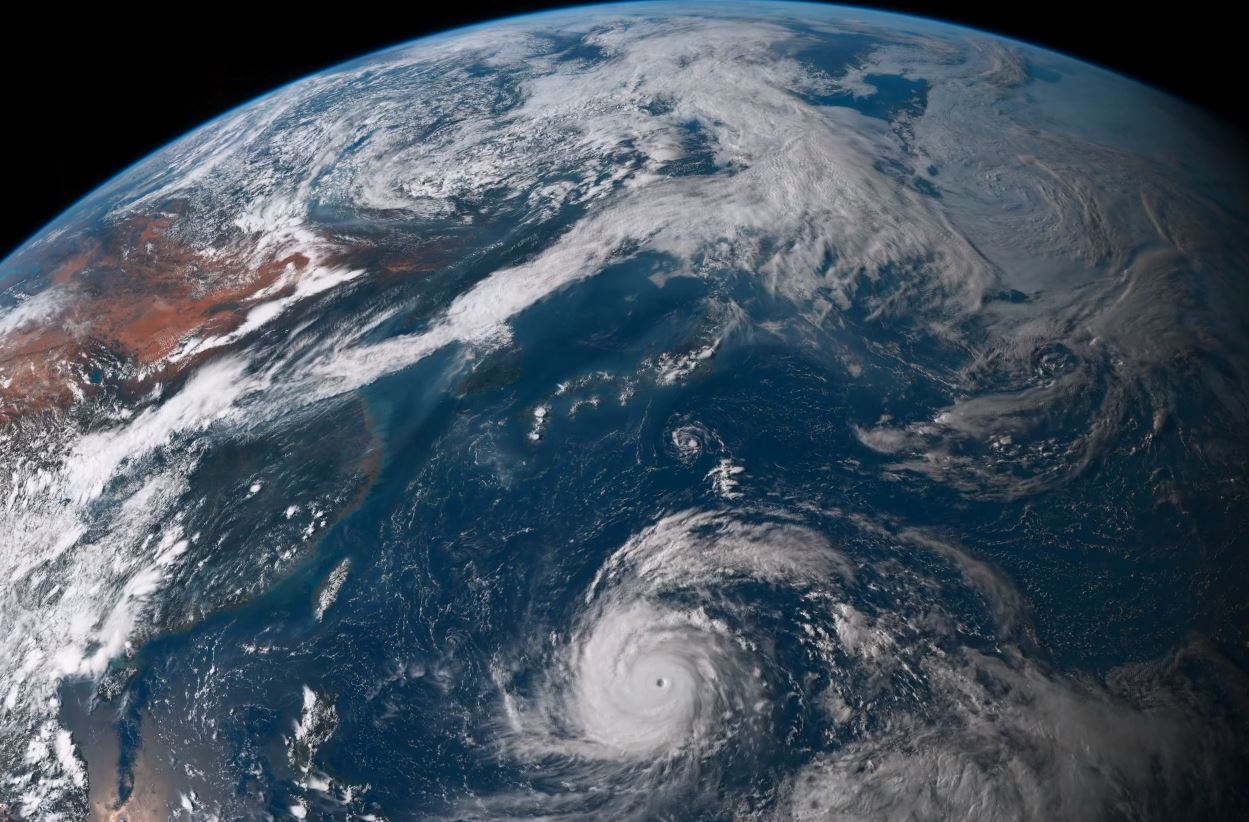Mesmerizing Satellite Video Captures Magical View of Earth

Please direct your attention to the absolutely magical video of planet Earth from space.
Like cats with a sparkly toy, we here at Space.com have been unable to pull our gazes away from this stunning website, glittering.blue. The site plays a looping video of a 24-hour period captured by the Himawari-8 Japanese weather satellite, sped up to last just a few seconds.
The satellite is in a geostationary orbit, positioned over Japan and Australia. The video captures an array of stunning colors, such as the reddish-brown and green landscapes, the blue hues of the ocean, as well as textures (look at those clouds!) that aren't always visible in satellite images. The flowing motion of the clouds and the ocean currents and the swirling of a tropical storm are totally hypnotizing.
At this point, there are probably millions of photographs of the Earth taken from space, but few are ever made available in a format where viewers can see details on the surface in such high resolution, at such a large size. There's a lot more information about the satellite and its capabilities on the website's About page, which is a fascinating read for whenever you manage to stop staring at the video. It also answers questions like why there are no city lights visible in the nighttime portion of the movie, and provides information about some of the features on the planet. The site was created by Charlie Loyd, a satellite imagery analyst for a company called Mapbox. Loyd gave a long interview to The Atlantic about the project.
The video is rather large, and some people have had trouble getting it to load. Unfortunately we can't make any recommendations other than trying it on a better internet connection.
If you're looking for a wonderful way to end your Friday, we'd recommend this glittering gem.
Follow Calla Cofield @callacofield. Follow us @Spacedotcom, Facebook and Google+. Original article on Space.com.
Get the Space.com Newsletter
Breaking space news, the latest updates on rocket launches, skywatching events and more!
Join our Space Forums to keep talking space on the latest missions, night sky and more! And if you have a news tip, correction or comment, let us know at: community@space.com.

Calla Cofield joined Space.com's crew in October 2014. She enjoys writing about black holes, exploding stars, ripples in space-time, science in comic books, and all the mysteries of the cosmos. Prior to joining Space.com Calla worked as a freelance writer, with her work appearing in APS News, Symmetry magazine, Scientific American, Nature News, Physics World, and others. From 2010 to 2014 she was a producer for The Physics Central Podcast. Previously, Calla worked at the American Museum of Natural History in New York City (hands down the best office building ever) and SLAC National Accelerator Laboratory in California. Calla studied physics at the University of Massachusetts, Amherst and is originally from Sandy, Utah. In 2018, Calla left Space.com to join NASA's Jet Propulsion Laboratory media team where she oversees astronomy, physics, exoplanets and the Cold Atom Lab mission. She has been underground at three of the largest particle accelerators in the world and would really like to know what the heck dark matter is. Contact Calla via: E-Mail – Twitter









